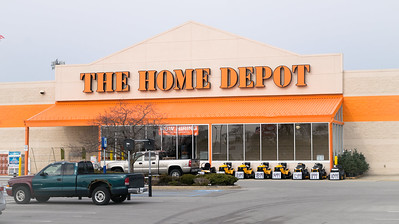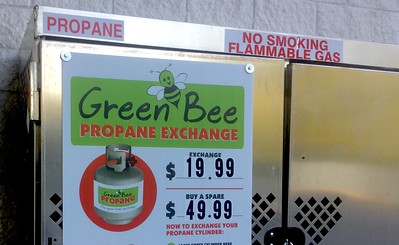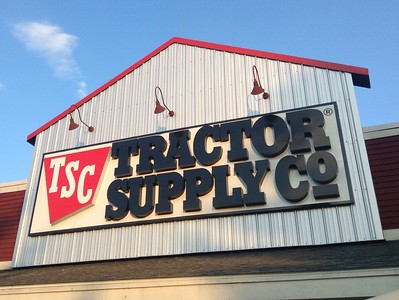
Refillable tanks are typically made of steel and have a valve that can be opened to allow for refilling. Non-refillable tanks, on the other hand, are often made of aluminum and do not have a valve that can be opened for refilling.
It is important to check the label on your Bernzomatic propane tank to determine if it is refillable or not. If the label indicates that the tank is non-refillable, you should not attempt to refill it.
In general, larger propane tanks, such as the 20 lb. and 30 lb. tanks commonly used for grilling and heating, are typically refillable. However, smaller tanks, such as the 1 lb. and 2.1 lb. tanks commonly used for camping and outdoor activities, are often non-refillable.
If you plan to use this brand of propane tanks regularly, it can be more cost-effective and environmentally friendly to refill them instead of purchasing new tanks each time. However, it is important to follow safety precautions and have tanks filled by a licensed professional who follows proper safety procedures.
[table id=3 /]
Can You Refill Bernzomatic Propane Tanks?
So, you’ve got a Bernzomatic propane tank and you’re thinking about refilling it. Before you make a move, here’s what you should know:
What Does Bernzomatic Say?:
Generally, the company suggests not refilling their disposable propane tanks. They’re made for a one-time use. If you go against this, you might risk voiding any product guarantees.
Why Should You Be Cautious?:
- Pressure Worries: These tanks are designed to handle pressure just once. Refilling can put added stress on the tank, which might cause it to fail or leak.
- Valve Trouble: After using a tank once, its valve might not seal as tightly. That means possible leaks.
- Dirty Propane: Over time, a tank might collect residues. If you refill, you might not get pure propane.
- No Regular Check-ups: Big tanks designed for refills get checked often. Your small disposable tank? Not so much.
- Safety First: If you’re really set on refilling, get a pro to do it. They’ll know how to handle and check the tank safely.
New vs. Refilled: What’s Better?:
- Predictable Performance: With a new tank, you know exactly what you’re getting. A refilled tank? Its performance can be hit or miss.
- Clean Fuel: New tanks give you clean propane. Refilled ones might have contaminants.
- Top Efficiency: A new tank will work as efficiently as it gets. A refilled one might lag a bit.
- Useful Life: Refilling over and over might wear your tank out faster, which could be risky.
While you might want to refill your propane tank to save a few bucks or be eco-friendly, it’s crucial to weigh the risks. Safety should always be your top priority, and when in doubt, follow the maker’s advice.
What Sizes of Bernzomatic Propane Tanks are Refillable and Non-Refillable
Refillable Sizes
This brand offers a range of refillable propane tanks, which are available in various sizes to suit different applications. The sizes of propane tanks that are refillable include:
- 20 lb. propane tank: This is the most common size for home use, typically used for outdoor grilling, heating, and other small appliances.
- 30 lb. propane tank: This size is also commonly used for home heating and outdoor appliances.
- 40 lb. propane tank: This size is often used for larger home heating systems or industrial applications.
- 100 lb. propane tank: This is the largest size of propane tank offered by this brand, often used for commercial and industrial applications.
It’s important to note that not all propane tanks are refillable. This brand also offers non-refillable disposable tanks, which are typically smaller in size and intended for portable applications. These tanks are designed to be used once and then recycled.
When using a refillable propane tank, it’s important to have it refilled by a qualified professional and to follow all safety guidelines for propane usage. Proper handling, storage, and usage can help ensure that your propane tank remains in good condition and operates safely and efficiently for years to come.
Non-Refillable Sizes
Bernzomatic offers non-refillable propane tanks, which are typically smaller in size and intended for portable applications. These tanks are designed to be used once and then recycled. The sizes of non-refillable propane tanks include:
- 14.1 oz. propane tank: This is the most common size of non-refillable propane tank offered by this brand. It is typically used for small portable appliances, such as camping stoves, lanterns, and heaters.
- 16.4 oz. propane tank: This is another common size of non-refillable propane tank offered by this brand. It is also used for small portable appliances and can be found at many camping and outdoor retailers.
Non-refillable propane tanks are intended for portable use and are not designed to be refilled or reused. When the tank is empty, it should be properly disposed of or recycled. It’s important to follow all safety guidelines when using non-refillable propane tanks, including proper storage and usage to prevent accidents and injuries. Always read and follow the instructions provided by Bernzomatic for your specific product, and seek professional advice if you have any questions or concerns.
Properly Dispose Non-Refillable Propane Tanks
Properly disposing of non-refillable propane tanks is important for environmental and safety reasons. Here are some tips for disposing of non-refillable propane tanks:
- Check with your local waste management facility to see if they accept non-refillable propane tanks for recycling or disposal. Some facilities may require that the tanks be emptied or punctured before disposal.
- If your local waste management facility does not accept non-refillable propane tanks, contact a propane tank recycling company or hazardous waste disposal company for guidance.
- If the tank is not empty, you can safely and properly discharge it by using it until the propane is gone, or by contacting a propane dealer or qualified professional for assistance.
- Never attempt to puncture or cut open a non-refillable propane tank. This can be extremely dangerous and should only be done by a qualified professional.
- Store empty or partially used propane tanks in a cool, dry, and well-ventilated area until they can be properly disposed of. Do not store tanks near any sources of heat or open flames.
- Always read and follow the instructions provided by Bernzomatic for your specific product, and seek professional advice if you have any questions or concerns.
By properly disposing of non-refillable propane tanks, you can help ensure that they are recycled or disposed of safely and responsibly. This can also help prevent environmental damage and ensure the safety of those who handle the tanks during the recycling or disposal process.
What Sets Bernzomatic Propane Tanks Apart
This brand has been a respected name in the propane industry for many years. Their tanks are not just any ordinary propane containers; they come with a range of features and specifications that make them stand out. Here’s a look at what sets Bernzomatic propane tanks apart from generic propane tanks:
Brand Reputation and Legacy:
- The brand has been in business for over a century, establishing a strong reputation for producing reliable and high-quality products.
Specialized Applications:
- Bernzomatic tanks are often designed for specific applications, such as hand torches or camping equipment, ensuring optimized performance for these uses.
Safety Features:
- Enhanced safety mechanisms, such as pressure relief devices, ensure that the tanks operate safely under various conditions.
Some of their tanks come with a stable base to reduce the risk of tipping over.
Quality of Material:
- Their propane tanks are often constructed with high-grade steel, ensuring durability and resistance to rust and corrosion.
Consistent Propane Quality:
- The propane in Bernzomatic tanks often undergoes rigorous purification processes to ensure consistent burning qualities, leading to efficient flame temperatures and reduced contaminants.
Clear Labeling:
- The brand takes user safety seriously. Their tanks are clearly labeled with safety and usage instructions, ensuring that even novice users can handle them correctly.
Regulatory Compliance:
- The company ensures that all their tanks meet or exceed the regulatory standards set by industry and governmental bodies, ensuring their tanks are safe for use in various environments and applications.
Environmental Initiatives:
- The company has made efforts towards sustainability, producing tanks that have a reduced environmental footprint, either through manufacturing processes or recyclability.
Customer Support and Resources:
- This brand offers robust customer support, providing resources, guides, and assistance to users, ensuring they get the best out of their products.
Is Bernzomatic Butane or Propane?
This brand offers both butane and propane fuel options for their torches and lighters, but their propane tanks are much more widely used and well-known.
Propane tanks are used for a variety of applications, including grilling, heating, camping, and welding. They are made of steel or aluminum and contain propane gas, which is a flammable hydrocarbon gas commonly used as fuel for heating and cooking.
Butane fuel is typically used for smaller torches and lighters, such as those used for hobby and craft projects. Butane fuel is a flammable gas that is typically stored in pressurized canisters made of aluminum or steel.
In general, Bernzomatic propane tanks are more commonly used and widely available than their butane fuel options. However, both types of fuel can be purchased from a variety of retailers and online suppliers. It is important to use the appropriate fuel for your torch or lighter, as using the wrong type of fuel can be dangerous and cause damage to the device.
Safety Tips When Using Bernzomatic Propane Tanks
Using propane tanks safely is important to prevent accidents and injuries. Here are some safety tips to keep in mind when using propane tanks:
- Always read and follow the instructions provided by Bernzomatic for your specific product. This includes any warning labels or instructions for use.
- Always store propane tanks in a cool, dry, and well-ventilated area. Do not store tanks near any sources of heat or open flames.
- When using propane tanks, make sure to keep them away from any sources of heat or ignition, including open flames, sparks, cigarettes, and electrical devices.
- Always use a compatible regulator with your propane tank, and make sure it is properly installed and securely tightened.
- Before using a propane tank, check the tank for any damage, including dents, cracks, or rust. Do not use a damaged tank.
- When transporting propane tanks, always make sure they are properly secured in an upright position and that the valve is closed.
- When using propane tanks for grilling or other outdoor activities, always use them in a well-ventilated area to prevent carbon monoxide buildup.
- Always keep a fire extinguisher nearby in case of an emergency.
- If you smell gas or suspect a leak, immediately turn off the valve on the propane tank and move away from the area. Do not use any electrical devices or open flames until the area has been ventilated and it is safe to do so.
- If you are unsure how to safely use a propane tank or torch, seek advice from a professional or contact customer service for assistance.
By following these safety tips and using propane tanks responsibly, you can safely enjoy the benefits of this versatile and reliable fuel source.
What Experts Say About Refilling Bernzomatic Propane Tanks
Considering refilling your Bernzomatic propane tank? Here’s what industry professionals think:
What Most Professionals Recommend:
- If you’ve read the Bernzomatic guidelines, you know they suggest not refilling their disposable tanks. And guess what? Most propane and safety experts agree. They emphasize that these tanks are made for a one-time use, and going against this could be risky.
Safety First!:
- Ever heard that overfilling these tanks can be dangerous? Well, experts confirm this. Filling them up too much, especially when it’s hot, can lead to leaks or even ruptures.
- If you’re thinking the tank’s valve looks sturdy, remember: with each refill, its seal can wear out a bit, which might cause leaks.
- Think refilling is light on your pocket? Some experts warn that while it might seem cheaper initially, the tank’s performance might drop. So, you might end up replacing it more often or facing potential hazards.
Real-life Examples to Consider:
- That 2018 Incident: Heard of the small business that tried to cut corners by refilling Bernzomatic tanks? One leaked due to a worn-out valve. Luckily, they caught it in time, but it’s a stark reminder of the risks.
- A 2020 Insight: A study by the Propane Safety Institute showed that tanks refilled multiple times could develop tiny cracks. Imagine your tank slowly leaking propane without you knowing!
Thinking Green?:
- If you’re trying to be eco-friendly, some experts suggest other routes. Instead of refilling, how about recycling your disposable tank? Or maybe invest in a larger tank designed to be refilled safely multiple times.
While refilling your Bernzomatic tank might sound tempting, it’s essential to weigh the risks. Many experts advise against it, emphasizing safety over short-term savings. When it comes to propane, it’s always best to play it safe.
To Make a Conclusion
The discussion above raised a few points:
- Bernzomatic themselves advise against refilling their disposable tanks, emphasizing their design for a one-time use.
While the initial appeal of savings can be tempting, experts across the board voice concerns about safety risks. From potential valve leaks to the dangers of overfilling, the hazards are real. - Real-world examples and studies further spotlight the potential risks. Instances of leaks and findings on tiny cracks in repeatedly refilled tanks underscore the concerns.
Safety isn’t just about avoiding immediate dangers; it’s also about ensuring long-term peace of mind. Cutting corners with propane tanks can jeopardize not only your safety but also that of those around you. When you follow guidelines and prioritize safety, you’re not just making a decision for now but for the future.
In essence, while refilling might seem like a cost-effective solution, the potential risks often outweigh the benefits. It’s crucial to respect manufacturer guidelines, heed expert advice, and always prioritize safety above all else. After all, when it comes to matters of safety, it’s always better to be safe than sorry.

Mike is an experienced propane technician with over 15 years of professional experience in the field. He has dedicated his career to helping customers with their propane needs, from installation to maintenance and repair. Together with Jeremy, he co-founded this website to provide useful information and guidance to customers seeking reliable propane services.




